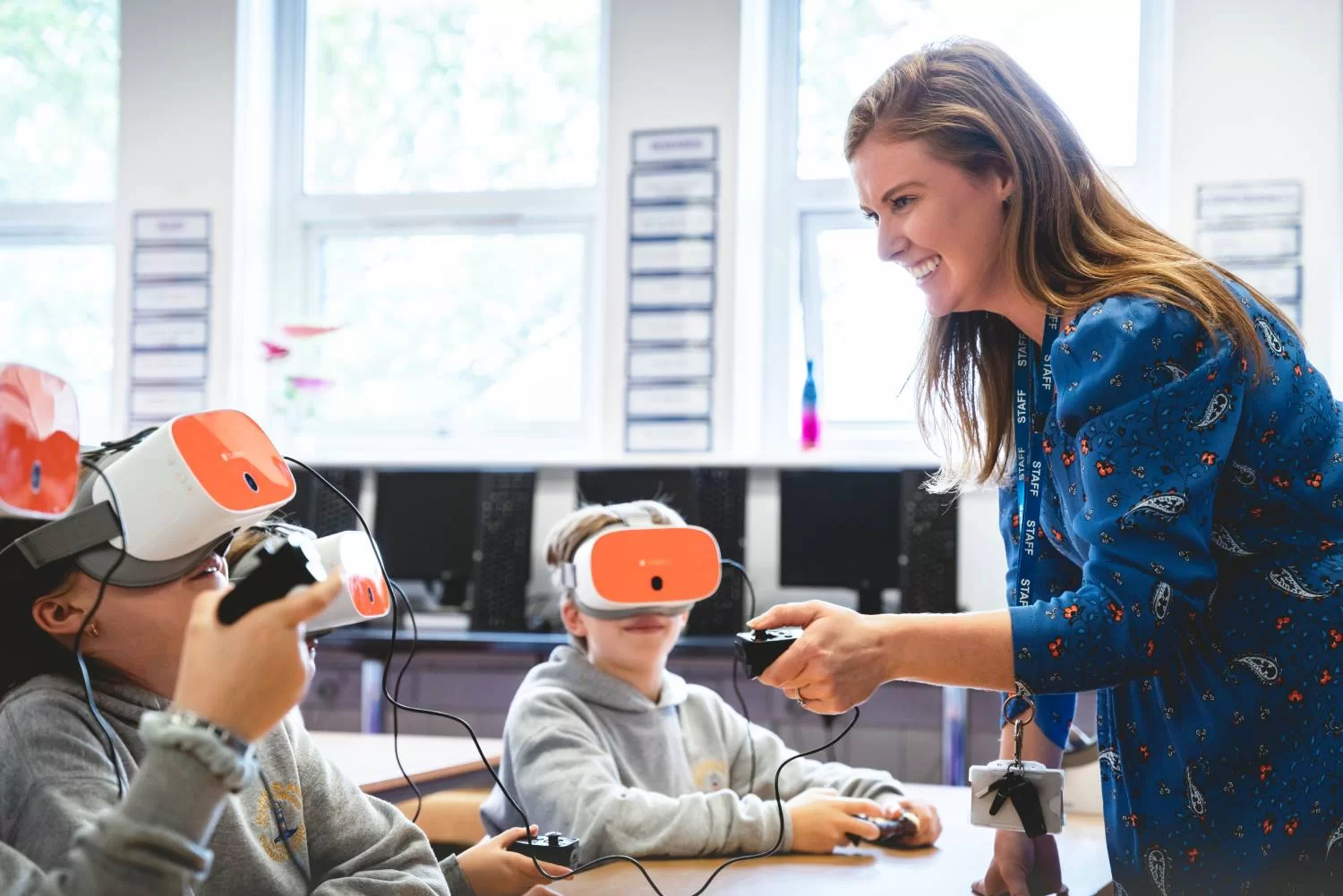For years, the promise of technology in education has been about making learning “more engaging.” But for many students, that meant trading chalkboards for PowerPoint slides, or textbooks for PDFs and upgrades, but not exactly transformative. Now, classrooms are beginning to experiment with something far more immersive: augmented reality (AR) and virtual reality (VR).
From walking through the streets of ancient Rome to zooming into the nucleus of a cell, AR and VR are blurring the line between studying and experiencing. For students raised on video games and interactive media, this isn’t just a novelty, it’s a shift in how lessons can come alive.
Why Immersion Matters in Learning
Research shows that active learning leads to stronger retention and deeper understanding than passive listening. AR and VR tap directly into this principle: instead of reading about how molecules bond, students can manipulate 3D models. Instead of watching a video of a historical site, they can virtually stand inside it.
This interactivity gives students a sense of presence and agency. They’re not just “learning about” a concept they’re part of it. That’s a powerful motivator for engagement, especially for visual and kinesthetic learners who may struggle in text-heavy classrooms.
Real Use Cases Emerging in Schools
Some of the most compelling applications of AR and VR are already moving beyond pilot projects:
- History & Geography: Virtual field trips take students anywhere in the world (or across time). Imagine a world history class where students explore pyramids in Egypt or stand in the middle of the Boston Tea Party.
- Science & Medicine: Complex systems like the human heart or chemical reactions become explorable in 3D, giving learners a hands-on grasp of concepts that are otherwise abstract.
- STEM Skills: Engineering and coding programs are adopting AR/VR labs to let students build, test, and debug projects in real time without the cost of physical materials.
- Accessibility: Students who can’t physically attend a trip, lab, or site visit gain a comparable experience through VR, leveling the playing field for access.
The Equity Question: Who Gets Access?
While the promise of AR and VR is clear, so are the challenges. Headsets and supporting hardware can be expensive, often beyond the budgets of underfunded schools. If immersive learning becomes a premium feature available only to students in well-funded districts, it risks widening the digital divide instead of closing it.
There’s also the risk of “over-hype.” Not every lesson benefits from immersion. Students don’t need VR to practice multiplication tables, and poorly designed applications can distract more than they teach. The key lies in integrating AR and VR where they genuinely enhance understanding, not just where they look flashy.
The Future of Hybrid Learning Environments
As hybrid and blended learning models expand, immersive classrooms could become part of a larger shift: learning that isn’t confined to textbooks or lecture halls. Imagine students preparing for an in-person discussion by first taking a VR tour of a relevant site, or practicing lab safety protocols virtually before entering a real lab.
In this way, AR and VR aren’t replacements for teachers or traditional instruction, they’re amplifiers. They allow educators to extend their lessons into experiences that stick with students far longer than a slide deck.
Conclusion: From Screens to Experiences
For decades, students have been told to “picture it in your head.” With AR and VR, they don’t have to imagine they can step inside the lesson itself. While cost, accessibility, and thoughtful integration remain hurdles, immersive classrooms are opening doors to a richer, more equitable way of learning.
If the last decade was about putting content on screens, the next may be about tearing those screens down and walking students directly into the worlds they’re studying.






